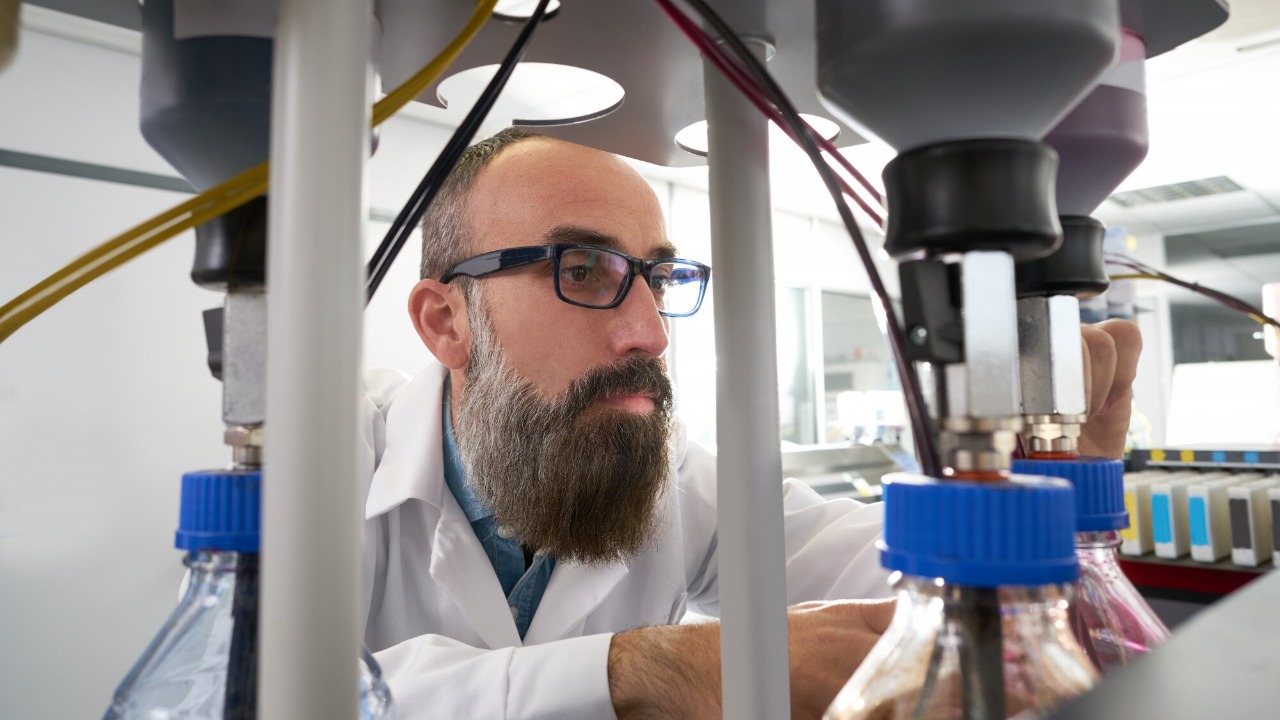
In a significant stride towards sustainable textile manufacturing, scientists have ingeniously harnessed the capabilities of E. coli bacteria to create and dye rainbow-colored fabric entirely in a laboratory setting. This innovative approach, which builds on previous efforts to produce dyes such as cochineal in labs, promises to revolutionize the fashion industry by eliminating the need for chemical-intensive processes.
Bacterial Role in Fabric Synthesis
The role of E. coli in this groundbreaking technique is twofold. Firstly, the bacteria are genetically engineered to spin protein-based fibers that mimic silk or cellulose, forming the base of the textile. This process involves intricate genetic modifications that allow the E. coli to produce these fibers, a feat that marks a significant advancement in bioengineering.
Secondly, these modified E. coli are also capable of secreting colorful pigments directly into the fabric structure during synthesis. This is achieved through a lab-scale production process that includes specific fermentation conditions, resulting in the creation of initial fabric prototypes. This innovative approach to fabric synthesis and dyeing, as reported by Live Science, is a testament to the potential of biotechnology in sustainable manufacturing.
Integrated Dyeing Mechanism
The dyeing process in this technique is seamlessly integrated with the fabric synthesis. The E. coli bacteria are capable of producing a spectrum of hues, ranging from red to violet, which are embedded directly into the fibers during their formation. This eliminates the need for separate chemical baths, a common requirement in traditional dyeing processes.
This bio-dyeing method draws parallels to the lab-synthesized cochineal, a stable, non-toxic red dye traditionally derived from insects. The stability of these pigments has been thoroughly tested to ensure that the colors can withstand washing and light exposure without fading, as detailed by the Smithsonian Magazine.
Sustainability Advantages Over Conventional Textiles
The use of E. coli in fabric synthesis and dyeing offers several sustainability advantages over conventional textile manufacturing. For instance, the process requires significantly less water and energy compared to traditional cotton farming and synthetic dyeing. This is a crucial step towards reducing the environmental footprint of the textile industry.
Furthermore, this method eliminates the need for animal-derived dyes like cochineal, shifting instead to fully microbial sources. This shift was first reported in advancements from 2022 and has since been built upon. The potential for scalable, low-waste production also minimizes environmental pollution from textile industry runoff, as noted by Phys.org.
Historical Context of Bio-Based Dyes
The use of bio-based dyes has a rich history, tracing back to the ancient use of insect-based cochineal dyes. The modern bacterial alternatives represent a significant evolution in this field. The breakthrough in lab-producing cochineal without harvesting bugs in 2022 set the stage for broader microbial color innovation.
The recent reporting on bacteria enabling sustainable, vibrant fabric hues, as seen on November 12, 2025, is a testament to the rapid advancements in this field. This progression from traditional to modern bio-based dyes signifies a promising future for sustainable textile manufacturing.
Challenges in Scaling Lab Prototypes
Despite the promising potential of this technique, there are several challenges to overcome before it can be scaled up for industrial use. One of the main hurdles is optimizing the yield of E. coli for industrial volumes, given the limitations in fiber-spinning observed in early lab trials.
Regulatory considerations for genetically modified organisms in consumer textiles also pose a challenge. Drawing from precedents like cochineal, the safety of these dyes will need to be thoroughly assessed. Additionally, cost barriers compared to synthetic dyes need to be addressed, with projections for economic viability being a key focus post-2025 developments.
Potential Applications and Industry Impact
The potential applications of this technique are vast, ranging from eco-friendly fashion to customizable rainbow patterns for apparel and home goods. The broader implications for biotechnology in manufacturing are also significant, as highlighted in the November 15, 2025, coverage of E. coli’s dual role in creation and coloration.
Looking ahead, collaborations between scientists and textile firms could see the commercialization of bacterial fabrics within the next decade. This would mark a significant shift in the textile industry, paving the way for a more sustainable future.
More from MorningOverview